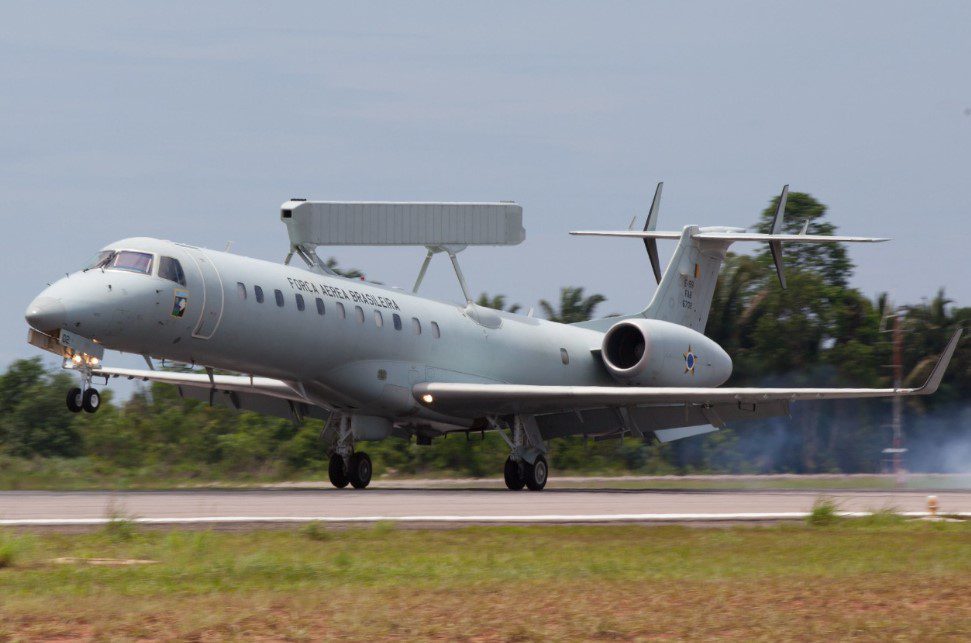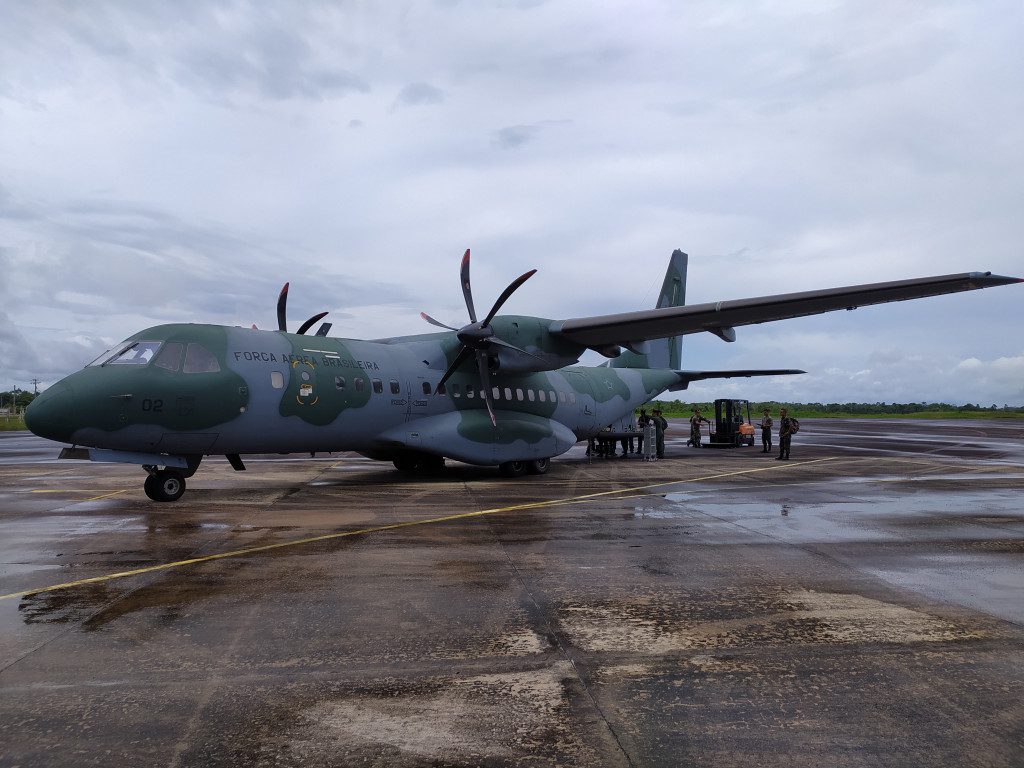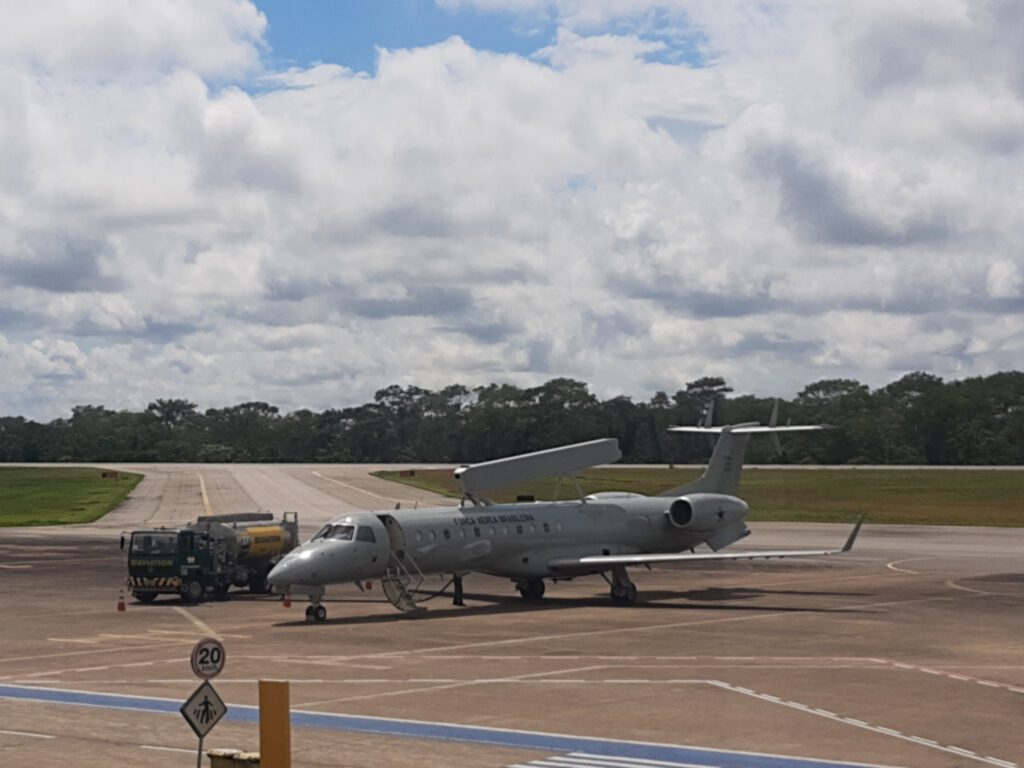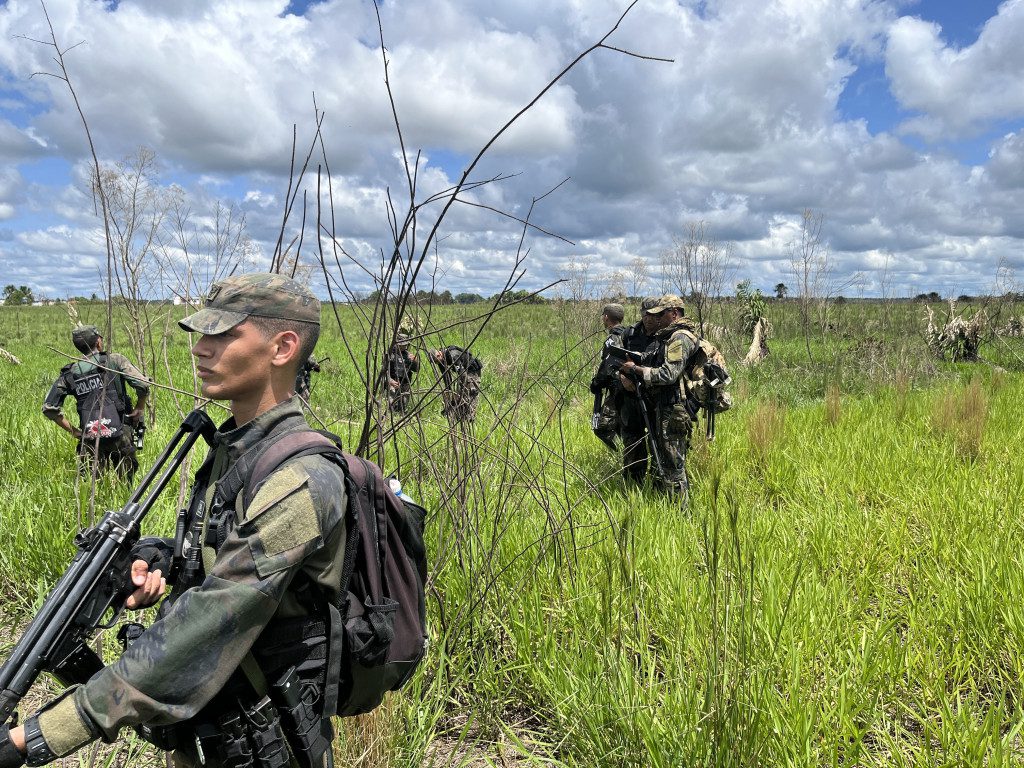The operation, which took place from October 14 to 27, included the presence of military personnel from the Brazilian Air Force in the Vale do Java indigenous reserve
Air Force Agency, by Lieutenant Letícia Faria and Major Oliveira Lima
The Ministry of Defense (MD) requested that the Brazilian Air Force (FAB) act in the Vale do Javari indigenous reserve, located in the municipalities of Atalaia do Norte and Guajará, in the western part of the state of Amazonas (AM). The action was part of Operation Agate and took place between October 14 and 27.
The objectives of the operation were to maintain the integrity of Brazilian airspace, to work together with forces and agencies to combat illegal activities, to control information, and to intensify the state’s presence in the border regions.
The operation was divided into four phases, the first being the deployment of FAB forces of interest to Eirunepé (AM); phase two, dealt with gathering information about the logistics of Criminal Organizations (ORCRIM) conducted by air; phase three, of Aerospace Control, acted in a coercive way against the illicit air traffic in the region; and, finally, phase four, the retraction of the participants.
Brazilian Air Force

The FAB, during the 14 days of the operation, almost 160 hours of flight time were accomplished and 46 military personnel from seven Air Units and Infantry Units were involved. The purpose of FAB’s participation was to carry out actions to benefit Intelligence, Surveillance and Reconnaissance (IVR) and Aerospace Control (C Aepc) tasks.
The E-99 and A-29 aircraft monitored the region’s airspace in order to detect unknown traffic. Just the presence of the FAB vectors already inhibits the action of criminal organizations. In addition, the P-95 Patrol Aircraft carried out the imaging of rivers. In the context of IVR actions, satellite images were generated and analyzed, in an unprecedented way, with the use of Artificial Intelligence. The information obtained will be used in future interagency operations.
The Fifth Squadron of the First Communications and Control Group (5º/1º GCC) – Zagal Squadron, provided communication links in Eirunepé, expanding the capacity of FAB Command and Control in the operation, allowing the transmission of data quickly and safely. The Porto Velho Security and Defense Group (GSD-PV) provided security for the personnel, installations and aircraft that operated in the region.
The C-105 aircraft did the mobilization and demobilization of the Operation, transporting personnel and material to Eirunepé and, at the end, back to headquarters. Mobility, which means the ability of personnel, aircraft, weapons, equipment and Air Force systems to immediately deploy from one airfield to another, operating with equal or greater effectiveness, is a striking and expressive characteristic of the FAB. An H-60L Black Hawk aircraft performed a SAR alert in the region, in support of the Operation.
FAB personnel from the First Squadron of the Ninth Aviation Group (1º/9th GAV) – Macaw Squadron; Second Squadron of the Third Aviation Group (2º/3rd GAV) – Grifo Squadron; Second Squadron of the Sixth Aviation Group (2º/6th GAV) – Guardian Squadron; Second Squadron of the Seventh Aviation Group (2º/7th GAV) – Phoenix Squadron took part in the Agate Operation; Third Squadron of the Third Aviation Group (3/3rd GAV) – Arrow Squadron; Seventh Squadron of the Eighth Aviation Group (7/8th GAV) – Harpy Squadron; Fifth Squadron of the First Communications and Control Group (5/1st GCC) – Zagal Squadron; Aerospace Operations Command (COMAE); Porto Velho Security and Defense Group (GSD-PV); Institute of Advanced Studies (IEAv); and the Aeronautical Technological Institute (ITA).

FAB Military Personnel in the Operation
For the Phoenix Squadron, the operation is a learning opportunity, because operating in the Amazon region is quite different from the usual, since most of the missions carried out by the squadron are in the maritime environment. During the trip to reach the operation site, it took approximately 13 hours of flight time, flying over a total of 2,230 nautical miles (4,130 kilometers).
Air Lieutenant Lucas dos Santos Ramalho, one of the pilots on the mission, commented on the operation. “For us from the Phoenix Squadron it is a unique opportunity to participate in an operation like this, because we crossed the whole of Brazil to arrive in western Amazonas to fulfill our mission, protecting our Amazon and maintaining national sovereignty. I joined the Squadron a short time ago and it is very interesting to participate in a real operation like this, I am sure I will remember this experience and the feeling of duty done!”, he said.

Photos: FAB *** Translated by the DEFCONPress FYI Team ***
